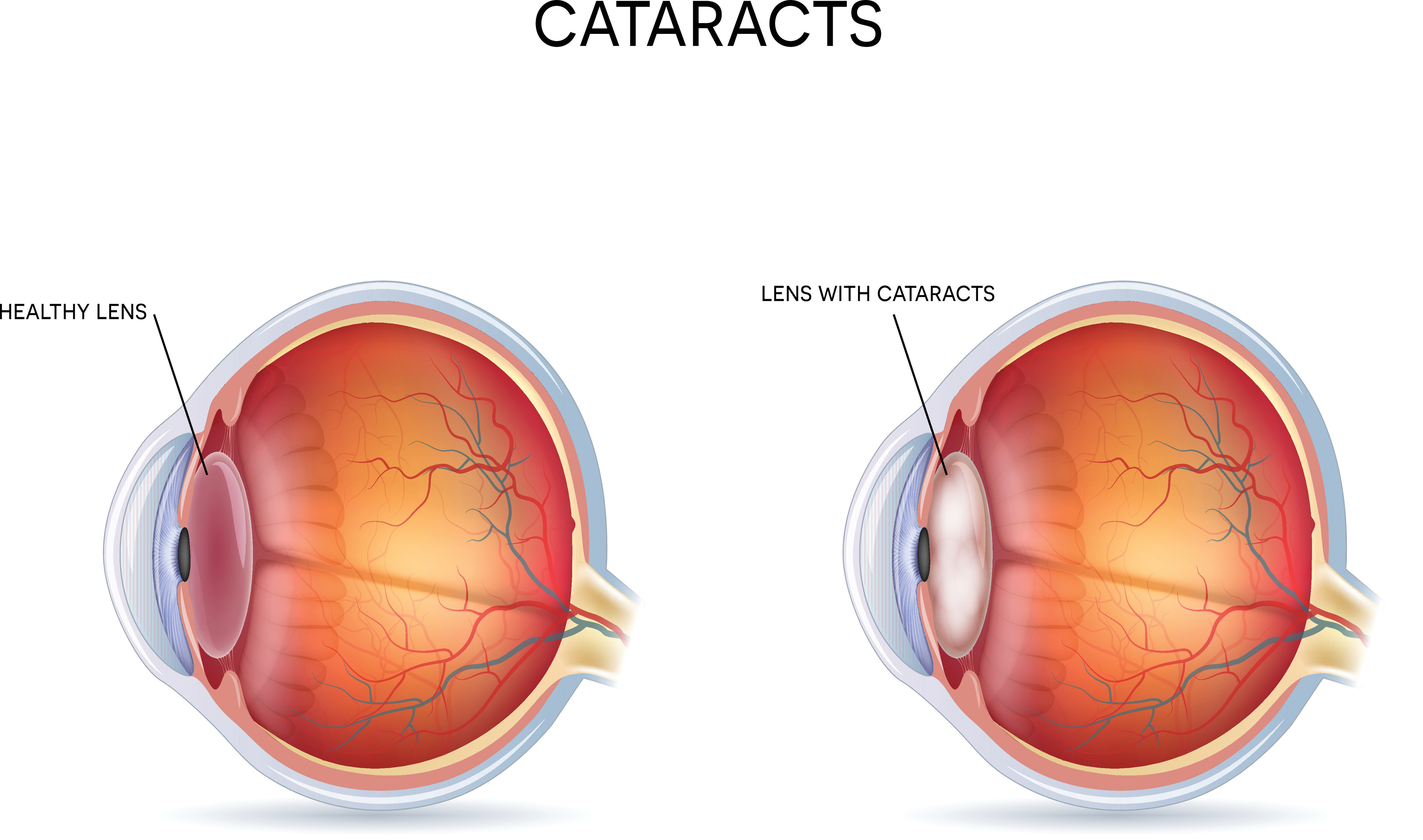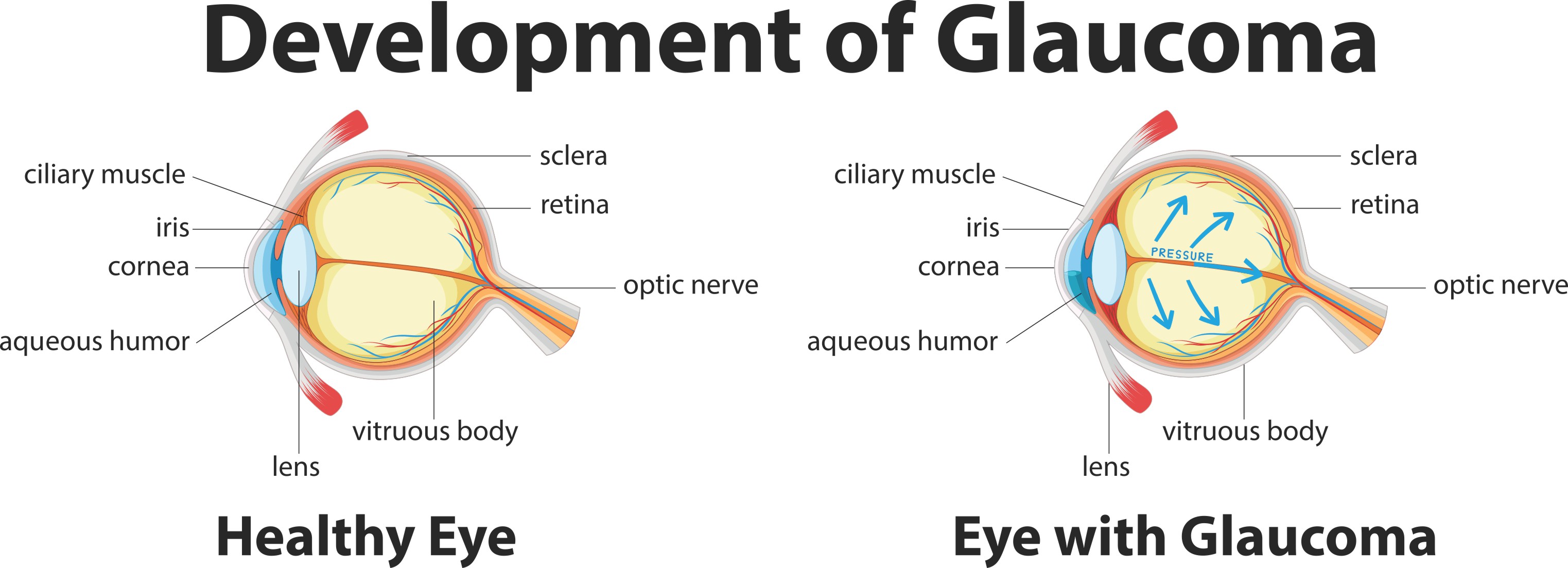Updated on October 9, 2024
How Aging Can Change Your Vision


Vision Center is funded by our readers. We may earn commissions if you purchase something via one of our links.

It’s possible to experience clearer vision as you get older, even without wearing glasses or contact lenses. This phenomenon is called “second sight” and has a scientific explanation.
However, this improved visual acuity is temporary and ends with worse vision.
Second sight doesn’t happen to everybody. Whether or not your eyesight improves with age depends on the type of vision problem you had before.
This article explains second sight, why it happens, and common eye problems that affect older adults.
What Is Second Sight?
Second sight is an eyesight improvement that can happen in the early stages of cataract development. Some people notice their vision improves without corrective lenses.
This temporary improvement occurs when the eye lens hardens before cataract forms. These structural changes affect the focusing ability of your eyes the same way prescription lenses do.
Unfortunately, second sight is only temporary. Once the cataract grows denser, the overall vision worsens.
Who Might Experience Second Sight?
Second sight can occur in the pre-cataract stages of people with farsightedness or perfect vision. These people might experience improved near vision or distance vision.
Farsightedness is a refractive error that causes blurry near vision. Causes include hyperopia and presbyopia.
Unfortunately, second sight doesn’t apply to nearsightedness (myopia). Nearsighted people usually find that their vision gets worse with pre-cataract changes.
Common Age-Related Vision Problems
Here are the most common eye problems associated with older age and their treatment options.
Presbyopia
Presbyopia causes poor near vision, which involves objects closer than two feet. This process begins in your forties and continues until the mid-sixties.

Presbyopia occurs when the natural lens starts to stiffen in our aging eyes. At this point, the ciliary muscles can no longer change the shape of the lens easily. As a result, your eyes have a hard time focusing at near.
You may begin to have trouble reading small print or experiencing eye strain in the early stages of presbyopia.
Treatment For Presbyopia
Treatment options for presbyopia include:
- Reading glasses. If you don’t have problems with distance vision, you may only need to wear glasses to read.
- Bifocal or progressive glasses. These combine distance and reading prescriptions into one pair of eyeglasses.
- Contact lenses. Including multifocal contact lenses or monovision contacts.
- Laser eye surgery. A surgeon can perform a monovision LASIK or PRK procedure to correct your vision.
Cataracts
Cataracts develop when the natural lens in your eye becomes cloudy and yellow, which causes blurry vision. Most people develop cataracts in both eyes, but each cataract may grow differently.

Cataracts usually progress slowly, so vision changes may only be noticeable once the cataracts are large enough. Symptoms of cataracts include:
- Cloudy vision
- Glare
- Poor night vision
- Decreased contrast sensitivity
- Clouding
Treatment For Cataracts
Surgery is the only way to remove a cataract. But in the early stages, your eye doctor may treat cataracts with a stronger glasses prescription.
During cataract surgery, the surgeon removes your cataract through a small incision on the front of your eye. The surgeon then inserts an artificial lens implant.
Once the cataract is gone, it can’t grow back. After surgery, many patients don’t need glasses or only use them occasionally.
Glaucoma
Glaucoma is an eye disease that causes irreversible damage to the optic nerves. Without treatment, it leads to vision loss and blindness.
Glaucoma usually doesn’t cause symptoms in its beginning stages. The only way to know if you have it is to see your eye doctor for a dilated eye exam.
People may notice slight peripheral (side) vision loss as the disease progresses. In severe cases, glaucoma causes total blindness.

Not everyone develops glaucoma as they age, but the risk for the disease increases. Having a family history of glaucoma also increases your risk.
Treatment For Glaucoma
Glaucoma has no cure, and any vision loss that occurs is irreversible. Treatment focuses on slowing down the progression of glaucoma so that patients don’t lose any more vision. Patients who respond well to treatment often maintain good eyesight.
Glaucoma treatment options include:
- Medicated eye drops to lower eye pressure
- Glaucoma surgery
- Laser therapy
Age-Related Macular Degeneration
Age-related macular degeneration (AMD) is a progressive eye disease that can cause severe vision loss.
There are various types of macular degeneration:
- Dry AMD. A milder, earlier form of macular degeneration may not cause significant vision loss.
- Geographic atrophy. A later stage of dry AMD can cause significant vision loss.
- Wet AMD. A late-stage, advanced form of macular degeneration may cause a sudden and severe decrease in vision.
Treatment For Age-Related Macular Degeneration
There is no specific medical treatment for patients with dry macular degeneration. Your eye doctor may recommend vitamin supplements that may slow the progression of dry AMD.
The most common treatment for wet AMD is anti-vascular endothelial growth factor therapy (anti-VEGF therapy). Anti-VEGF drugs are injected into the eye to slow the growth of abnormal blood vessels. Patients with wet AMD may see an improvement in their vision with treatment.
Diabetic Retinopathy
Diabetic retinopathy can affect anyone with type 1 or type 2 diabetes. It happens when uncontrolled blood sugar levels damage the blood vessels in your eyes.
Symptoms of diabetic eye disease include:
- Blurred vision
- Specks or strings floating in your central vision (floaters)
- Changing vision
- Poor color vision
- Dark or empty spots in your vision
Treatment for Diabetic Retinopathy
The best way to prevent vision loss is by controlling your blood sugar and blood pressure.
Other treatment options include:
- Anti-VEGF medication, including Avastin, Eylea, and Lucentis
- Laser surgery
- Vitrectomy surgery
How Does Aging Affect Eye Health?
The aging process affects your eyes in several ways. Many changes are typical, while others are serious eye diseases that require medical attention.
At age 40, ophthalmologists recommend getting a dilated eye exam yearly. Even if you have good eyesight, an annual eye exam helps maintain healthy eyes and detect age-related vision problems.
It’s essential to learn the early warning signs of common eye diseases. In some cases, an early diagnosis can save your vision.
Vision Aids For Severe Vision Loss
People with advanced glaucoma and age-related macular degeneration may experience severe and irreversible vision loss. It affects their ability to perform daily activities such as driving, cooking, and grooming. Some people also have difficulty walking without bumping into objects or tripping.
Low vision aids help optimize your remaining vision. A low vision clinic can fit patients with these devices and teach them how to use low vision aids properly.
These devices include:
- Telescopes. To help with distance-related tasks such as watching television or reading street signs.
- Magnifiers. To help people see objects up close, such as reading a newspaper or checking a medication label.
- Electronic video magnifier systems. These advanced low vision devices help people read documents more efficiently.
How to Keep Your Eyes Healthy As You Age
Nearly everyone notices slight changes in their vision as they age, and not every health condition is preventable.
However, there are steps you can take to help maintain good vision and eye health. These include:
- Eat a healthy diet. Foods like fresh eggs, leafy greens, and cold-water fish are high in vitamins and omega-3 fatty acids, which are beneficial for eye health.
- Eye exercises. Tracing a figure 8 with your eyes and focusing on something about 20 feet away helps strengthen eye muscles and improve focus.
- Physical activity. Exercise reduces your risk for vision-threatening health conditions like high blood pressure and diabetes.
- Protect your eyes. Wear quality sunglasses that block UV rays from the sun.
- Manage diabetes. By monitoring your glucose levels and getting regular eye exams.
- Visit your eye doctor. To monitor changes in your visual acuity and get routine dilated eye exams.
- Keep your prescription up-to-date. If you wear prescription glasses or contact lenses.
Summary
The natural aging process causes changes to your eyes. Typically, these changes are associated with poor eyesight or loss of vision.
Some older adults experience improved vision when the lens in their eye changes before a cataract forms. This is known as second sight, and it’s only temporary.
Cataracts are one of many health conditions that can cause your vision to worsen with age. Getting routine eye exams to detect early warning signs of potential vision problems is essential.
In this article
7 sources cited
Updated on October 9, 2024
Updated on October 9, 2024
About Our Contributors
Lauren, with a bachelor's degree in biopsychology from The College of New Jersey and public health coursework from Princeton University, is an experienced medical writer passionate about eye health. Her writing is characterized by clarity and engagement, aiming to make complex medical topics accessible to all. When not writing, Lauren dedicates her time to running a small farm with her husband and their four dogs.
Dr. Melody Huang is an optometrist and freelance health writer with a passion for educating people about eye health. With her unique blend of clinical expertise and writing skills, Dr. Huang seeks to guide individuals towards healthier and happier lives. Her interests extend to Eastern medicine and integrative healthcare approaches. Outside of work, she enjoys exploring new skincare products, experimenting with food recipes, and spending time with her adopted cats.

